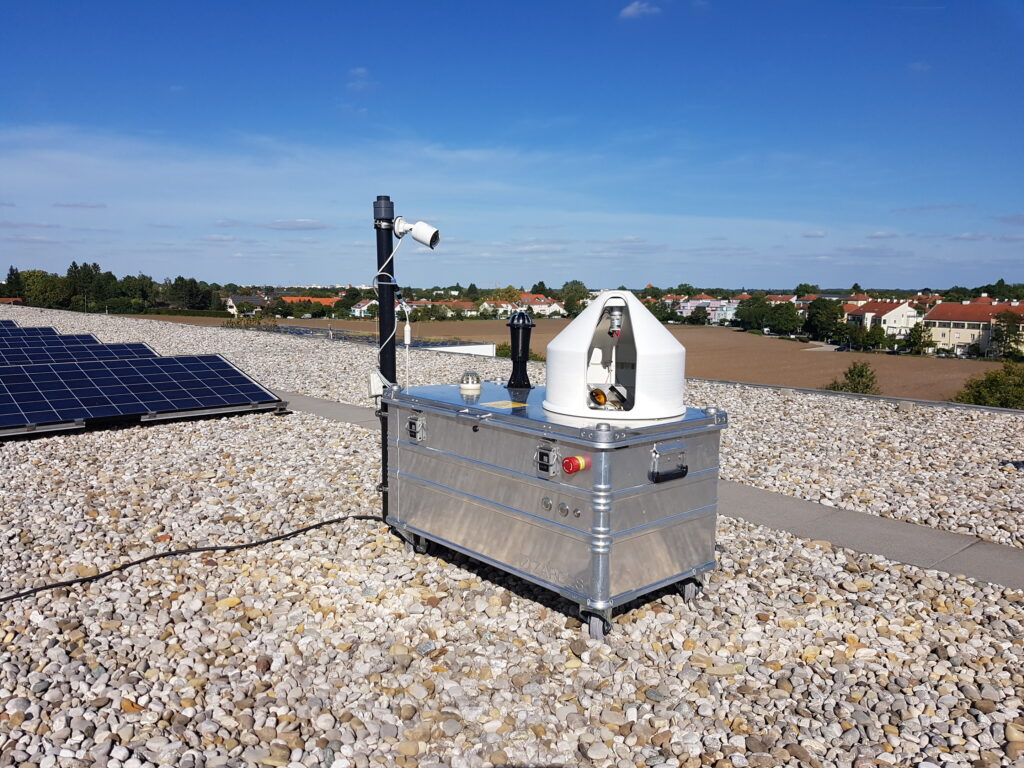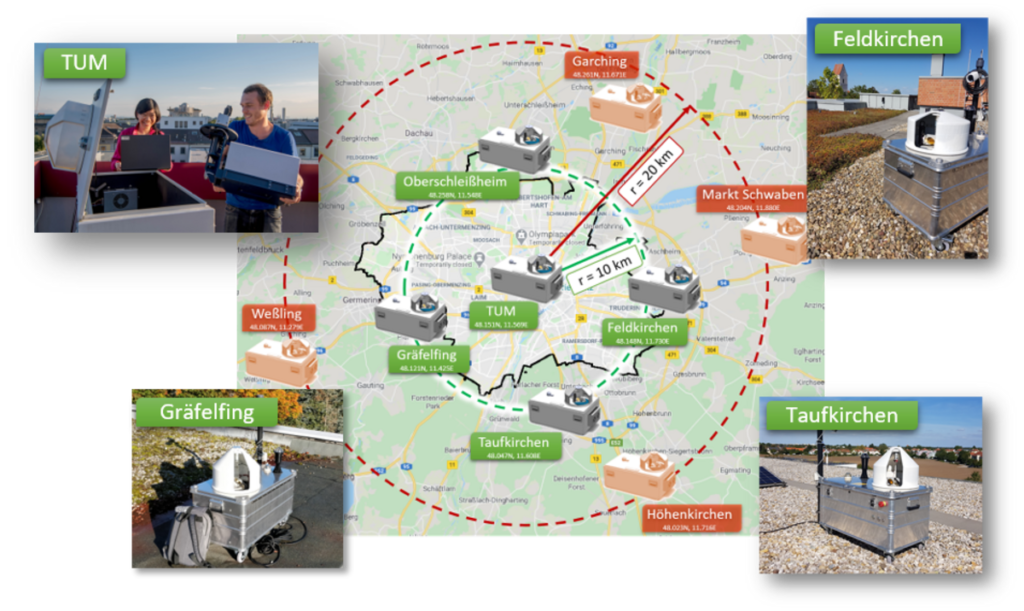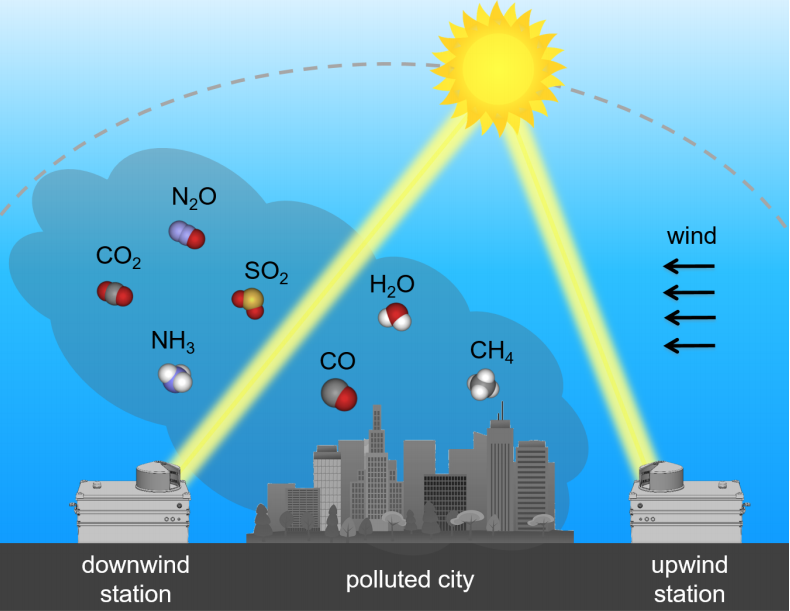Column Measurement Theory
- Sensor network and measurement systems: Dietrich et al. (2021): MUCCnet – Munich Urban Carbon Column network, Atmospheric Measurement Techniques
- Measurement principle: Chen et al. (2016): Differential column measurements using compact solar-tracking spectrometers, Atmospheric Chemistry and Physics
Research Question
Innovative measurement methods are needed to effectively assess climate protection measures. To this end, we have developed a new measurement system that generates a 3D dataset of urban greenhouse gases. ...
Climate change is one of the most pressing and debated topics of our time. However, since the sources of emissions cannot yet be quantified with sufficient accuracy or are even completely unknown, it is difficult to take appropriate countermeasures. Therefore, our research is focused on precisely determining the emission sources of greenhouse gases.
A fundamental problem in the quantification and qualified assessment of emission sources is the currently existing insufficient data basis. Current models are mostly based on calculations using a few real measurements. However, this approach is fraught with great uncertainty, as scientific studies have shown that actual emissions can deviate significantly from estimates. Therefore, we are developing sensor systems and measurement methods to quantify the greenhouse gas emissions of an entire city based on measurements.
In doing so, we focus on measuring the so-called column concentration of greenhouse gases, which can be determined by analyzing the solar spectrum. In this measurement, the average gas concentration in the air column between the measuring instrument and the sun is determined. Compared to measuring a point concentration with a standardized gas sensor, the column concentration is a three-dimensional data set that is insensitive to local influences and more accurately represents global changes in greenhouse gases. A photo of the measurement systems we have developed for this purpose is shown on the left.

Sensor network
Since September 2019, the first fully automated sensor network for quantifying urban greenhouse gas emissions exists in Munich. ...
In September 2019, we established the world's first fully automated sensor network for stationary measurement of urban greenhouse gas emissions. It consists of five high-precision FTIR spectrometer systems developed by us (see above). A map of the five sites is shown in green in the figure to the right. In red, you can see an alternative configuration of the sensors, which we tested in our one-month measurement campaign in August 2018.
The sensor network allows us for the first time to monitor urban greenhouse gas emissions long term using a three-dimensional measurement principle. Thus, in addition to the established calculations of Munich's greenhouse gas emissions, there is now for the first time a comparative data set based on real measurements. In addition to this novel opportunity to assess the effectiveness of climate protection measures for the first time using measurement technology, the network also offers a unique opportunity to calibrate greenhouse gas satellites such as the two NASA satellites OCO-2 and OCO-3.

Emission Estimates
Since the goal of climate protection measures is the reduction of greenhouse gas emissions, the measured concentrations must still be converted into emissions. With the DCM method, we have developed an appropriate model for this purpose. ...
With the help of our measurement systems, the concentrations of greenhouse gases can be quantified, but not the emissions. However, since climate protection agreements specify the reduction of emissions and not of concentrations as a goal, concentrations must additionally be converted into emissions. The difference between these two quantities is that emissions describe the output of a gas from a source (e.g., smokestack or exhaust), while concentrations represent the accumulation of a particular gas in the ambient air (i.e., the number of CO2 molecules in a cubic meter of air, for example). High concentrations are thus a result of high emissions.
To determine the emissions, we developed the so-called differential column method (DCM). The core of the method is the differential measurement of column concentrations (averaged gas concentration in the air column between sensor and light source) on the upwind and downwind side of the emission source, using no artificial light source but the sun.
A simplified illustration of this method is shown in the figure on the left. While the sensor placed upwind of the city measures the background concentration, the measurements from the sensor placed downwind of the city include urban exhaust in addition to the background concentration. In simplified terms, the difference between these two measurements thus represents the emissions that have been generated in the city.

BR-Television Report, April 8th 2021
Bavaria’s public broadcasting service reported on our sensor network MUCCnet on TV. The video takes 2:44 minutes and summarizes our main achievements and objectives (only available in German).
